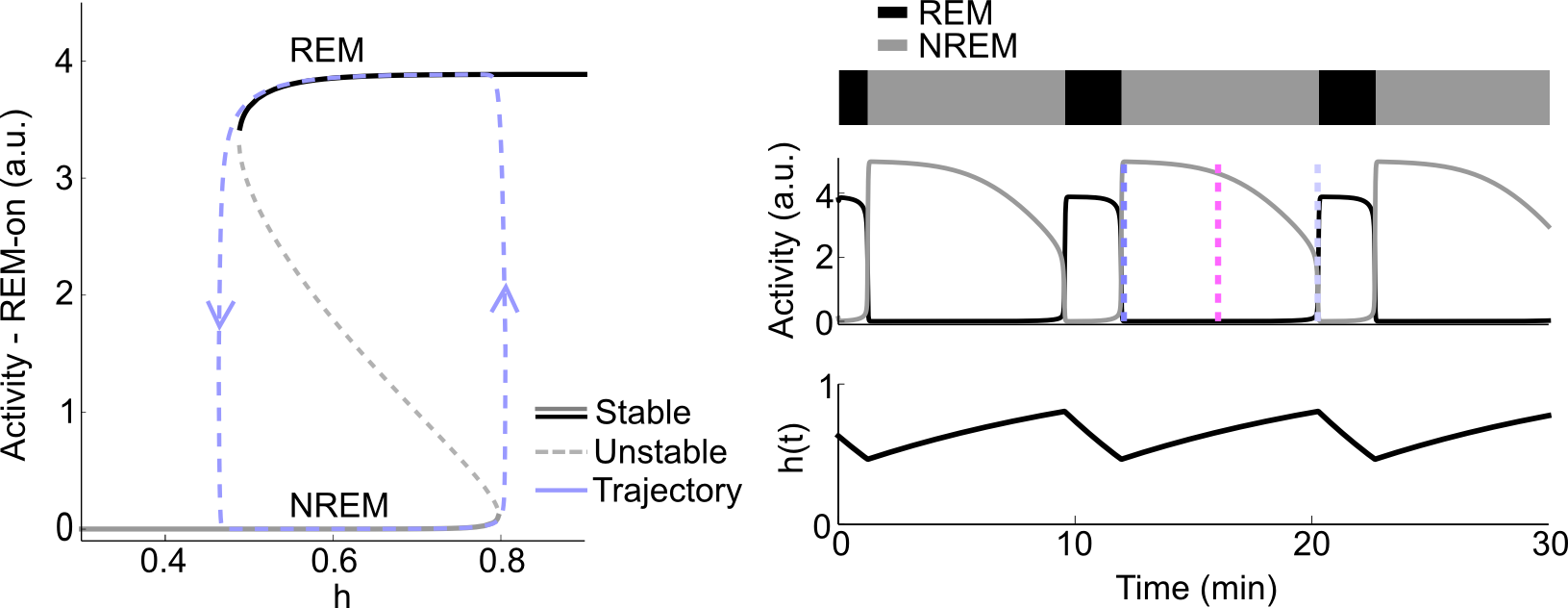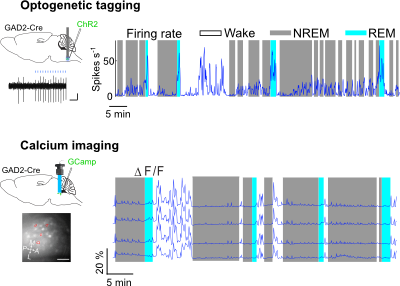
Research
We employ a multidisciplinary approach to investigate the regulation and function of brain states, with a focus on how these states shape neural activity and, in turn, influence emotions and behavior in both health and disease. Our research integrates techniques such as optogenetics, high-density in vivo electrophysiology (Neuropixels), calcium imaging, behavioral assays, and computational modeling.
Functional implications of REM sleep
REM sleep has been implicated in many things: From memory consolidation, forgetting, pain processing to consciousness. However, we lack a mechanistic understanding of how the specific neurophysiological brain state provided by REM sleep supports a specific function. Even more generally, it is completely unclear, why at all specific brain areas become highly active during REM sleep and how this activation affects neurons and their communication.
Combining novel methods to manipulate and record from distinct groups of neurons with techniques to unravel their molecular signature, we aim to understand, how neurophysiological and neurochemical events specific to REM sleep impact the molecular status of single neurons, their excitability, and ultimately behavior.
REM sleep and psychiatric disorders
Clinical evidence suggests an important role of REM sleep in emotional regulation. The contents of dreams occurring during REM sleep are often highly emotional, with negative emotions prevailing. Traumatic life experiences can trigger long lasting changes in REM sleep and changes in the sleep state are symptomatic of various affective disorders. However, how and why REM sleep is seemingly correlated with our emotional well-being is still largely unknown.
The mammalian sleep cycle
Sleep entails a multitude of brain rhythms operating on different time scales: On one side of the spectrum is the circadian rhythm with a 24 hour period; the opposite extreme are oscillations in the theta and gamma range with periods in the milliseconds range. In between these two extremes resides a further rhythm, the mammalian sleep cycle, the repeated alternation between NREM and REM sleep throughout sleep. We lack knowledge of how the brain generates such ultradian rhythms on a minutes-hours time scale.

Based on data obtained from recordings of sleep-active neurons and manipulation of neural circuits, we aim to estimate basic models that accurately capture the defining features of the mammalian sleep cycle. Predictions of contrasting models can then be tested in vivo to further our understanding of the core mechanisms that drive the sleep cycle in health and how these mechanisms become dysfunctional in disease.
Fragmentation of the sleep cycle is symptomatic of various psychiatric disorders. Unraveling the neural and molecular underpinnings of the sleep cycle is therefore a first crucial step towards understanding the inter-connection of sleep and psychiatric disorders on a circuit and molecular level.
© The Trustees of the University of Pennsylvania | Site best viewed in a supported browser. | Report Accessibility Issues and Get Help | Privacy Policy | Site Design: PMACS Web Team.

